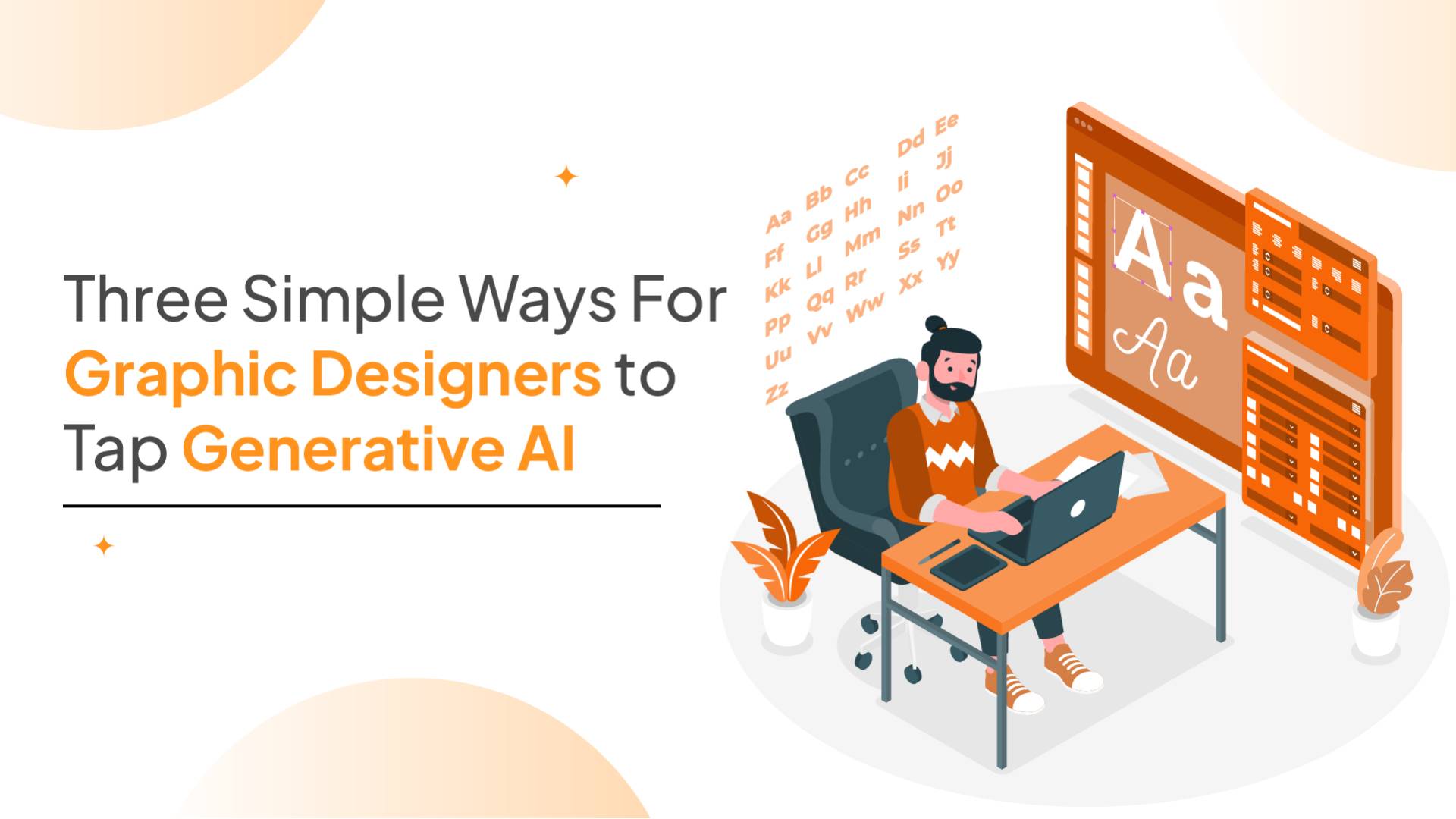

artificial intelligence marketing
Three Simple Ways For Graphic Designers to Tap Generative AI
Three Simple Ways For Graphic Designers to Tap Generative AI
A Guide to Enhancing Efficiency & Optimizing Workstreams
For graphic designers, generative artificial intelligence (AI) opens up a world of possibilities.
Whether it’s tapping ChatGPT to help brainstorm copy ideas or using Adobe Firefly for creative images, focus on the quick and easy ways these tools can streamline your work processes.
Regardless of your experience with AI-based tools, here are three helpful tips for integrating generative AI into your workstream:
Experiment: Embrace This Time of Exploration
My biggest piece of advice—experiment.
As we learn how to use these tools, the emerging technologies themselves are learning with us. The best way to understand their nuances and the areas where they could be the most helpful is by dedicating time to exploration.
Prompt-engineering is a skill on its own. Developing the right prompts takes trial and error (it’s why folks will even ask ChatGPT for the best way to ask ChatGPT a question). However, the initial time invested in experimenting with generative AI tools will pay off ten-fold in the long run, especially as they continue to advance.
If you’re looking for a simple way to begin integrating these tools into your daily work processes—start small and with the obvious.
AI features within your go-to software can be a helpful gateway into other generative AI tools. One example is Adobe PhotoShop’s generative fill tool, which is already integrated into a software that designers use everyday. Once you’ve become more accustomed with its advantages and shortcomings, it’ll be much easier to experiment with generative AI tools outside your comfort zone and daily routine. One benefit of these tools for more established companies is the fact that image rights and usage have been addressed, giving designers and companies greater comfort in not only experimenting but using the outputs in their creative work.
Expand Your Skill Set: Streamline Creative Processes
The countless hours spent on menial tasks often eat into time that could’ve been better spent on driving outcomes for clients.
For example, most designers aren’t copywriting experts. For independent designers or fast-growing teams that don’t have a dedicated copywriter, solutions like ChatGPT can significantly streamline the brainstorming process. By providing helpful thought starters to get the creative process flowing, drafting slogans and headline copy for creative ad units become much easier and prevent unnecessary and unproductive hours from being funneled into the writing process.
Additionally, hunting for stock images can eat up hundreds of hours of a designers’ time over the course of the year. However, Adobe products like Firefly and Photoshop’s generative fill tools also offer a critical solution for cutting back on the hours spent simply searching for stock images.
These are merely two examples of the many ways in which generative AI tools can eliminate unnecessary administrative work from a designer’s routine.
Get Creative: Strategize Ways to Enhance Client Outcomes
In addition to improving the work streams, generative AI tools can also help expand the possibilities for clients—brainstorm and client conversation starters if you will.
In 2023, many marketers faced budget cuts, forcing them to stretch each ad dollar spent. With budgets tightening, designers are often tasked with creating innovative solutions that can make lower budget ad units or campaigns appear just as appealing as a SuperBowl ad. Generative AI tools can help a designer bring their client’s vision to life, even if they can’t spend $80k on a photoshoot.
If a client doesn’t have a huge budget to spend on a photoshoot for their upcoming product launch, for example, consider the ways generative photo tools can help inspire background images to transform simple product images into compelling and vibrant masterpieces.
Not only will this drive better outcomes for your clients, it will also highlight your added value to their business as they’re able to drive significant outcomes despite cuts in budget. Driving efficiency, the ability to expand a designer’s capabilities also enhances their value proposition to their clients and company, which plays a pivotal role in professional development.
What should be your biggest takeaways?
In this era of exploration:
- Start small.
- Stay up-to-date on the latest launches.
- Enhance your workstream.
- Expand your capabilities.
- Experiment.
As these generative AI tools continue to evolve, their benefits like eliminating administrative tasks, expanding skill sets and improving efficiency will enhance designers’ differentiation and edge in a competitive advertising landscape—the simple tips listed above will empower you to stay ahead.

Tamoor Chaudhry
Tamoor Chaudhry is an Associate Design Manager at InMarket, a leader in real-time marketing and measurement for thousands of leading brands. At InMarket, Tamoor helps spearhead design product innovations, manage creative builds for client campaigns and mentor designers across the team. Prior to joining InMarket back in 2019, Tamoor served as Technical Operations Manager at Robles Video Productions, where he filmed, edited and managed all the cinema equipment for video shoots. Tamoor holds a Bachelor's degree from University of California, Riverside.




